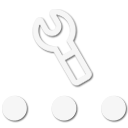I'll take it for granted, you have the typical North Americam 4x4 with a 2 speed transfer case.
Genarally today 4x4s have identical ratios in both axles.
In a straight line, 2WD, 4WD, no difference regardless of the road.
Yes, turning a corner in 4WD will tend to push the 4x4 in a straight line.
So turning a switchback on a 4WD only mountain road, you might want 2WD for control.
And in the winter at WalMart on an icy snow covered parking lot.... you will NEED 2WD to turn tight enough into the stall between to BMWs .... or maybe not

4WD HIGH. Gearing is the same as 2WD so on the highway, snow, slush, dty, wet pavement..... feel free to use 4WD HIGH full time. I do this every year, No issues.
Like the WalMart parking lot, shift into 2WD before turning off the highway on a sharp corner.
I'll get slagged for that comment, about using 4WD on the highway but watch the rock crawlers on granite, the grippiest rock ever, look at the black rubber they burn off in 4WD...... you in 4WD on the highway will leave zero rubber on the road.
I'd agree, you want 4WD in low traction situations, but NO, 4WD in high traction situations, ie rock crawling or highway driving, 4WD will not screw things up.
4LOW is about speed control, reducing driveline stress, gaining control. Pick it anytime 4HIGH just feels too fast. Or you want better control.
Try 4HIGH, 4LOW see what the difference is..... you can do this experiment anytime, anywhere. Even on a paved parking lot.
Try it, feel the wheel hop turning tight on pavement in 4HI and 4LOW. You will not break anything.
But you will feel the differences. You will learn.








